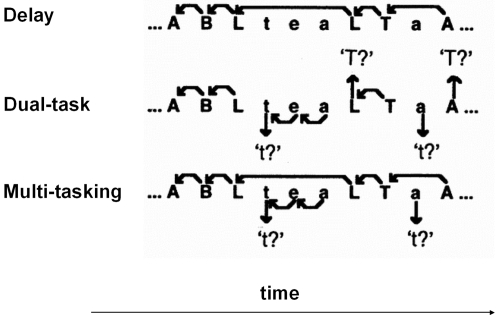Figure 4. Behavioural tasks.
Single-letters (upper or lower-case) from the word “tablet” were successively presented and subject's decisions were recorded using two single response-buttons, one for each hand. Delay condition: subjects decided whether two successively presented upper-case letters were also in immediate succession in the word “tablet” by pressing the right button for yes and the left button if they were not in succession, and they had to ignore lower case letters that were presented in order to delay the response required for upper-case letters. Dual-task condition: subjects decided whether two successively presented letters were also in immediate succession in the word “tablet” by pressing the right button for yes and the left button if they were not in succession, this time both for upper and lower case letters, except that they had to decide whether every first letter indicating a case change was the letter T (or t). Multi-tasking condition: subjects responded to upper case letters exactly as in the delay condition and to lower case letters exactly as in the dual task condition. Thus, the multitasking condition requires maintenance of the primary task information in memory (primary goal) so that it can be returned to after completing a secondary task (subgoal).

